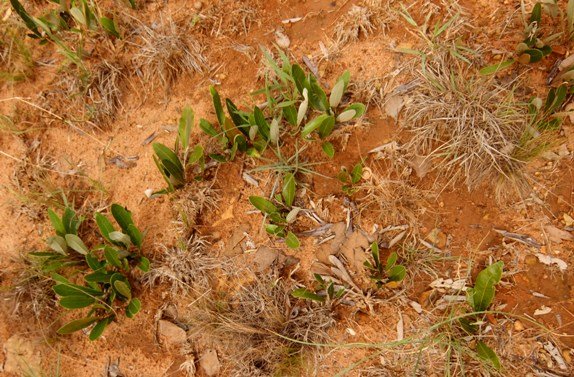Dichapetalum cymosum, the notorious gifblaar

Author: Ivan Lätti
Photographer: Johan Wentzel
A stand of low-growing Dichapetalum cymosum stems and leaf clusters in the veld may comprise the many separate above-ground components of just one plant. All is connected underground into one deep, woody stem and root system, sharing fortune and fate as one plant.
The fragrant, greenish white or creamy white flowers grow in clusters of five to eight flowers from leaf axils. The petals are free or separate, the feature reflected in the generic name, Dichapetalum as dicha (Greek) means apart, petalum relates to a petal. Cymosum reflects the arrangement of the flowers in their cyme-shaped inflorescence. Flowering happens from spring to autumn.
The initially green fruit are ovate to globose, becoming yellow to orange once ripe, resembling tiny leathery oranges, about 4 cm in diameter. The fruits are rarely seen; a fruit contains up to three seeds.
This plant is one of the important plant related causes of cattle losses, from the earliest days of cattle farming in the region. It also became a problem to the Voortrekkers, as soon as their wagons reached the plant’s distribution area north of the Magaliesberg and in KwaZulu-Natal.
The toxic substance present in the leaves is sodium fluoroacetate. Farmers control the plant by spraying herbicide, sometimes fencing off patches where it grows or keeping cattle away during the early growth season.
There is yet another Afrikaans colloquial name for the plant, viz. maakgoubossie (little hurry up bush). This may relate to the duties of herdboys that have to keep their herds away from these bushes in the veld (Vahrmeijer, 1981; Pooley, 1988; Wikipedia).

